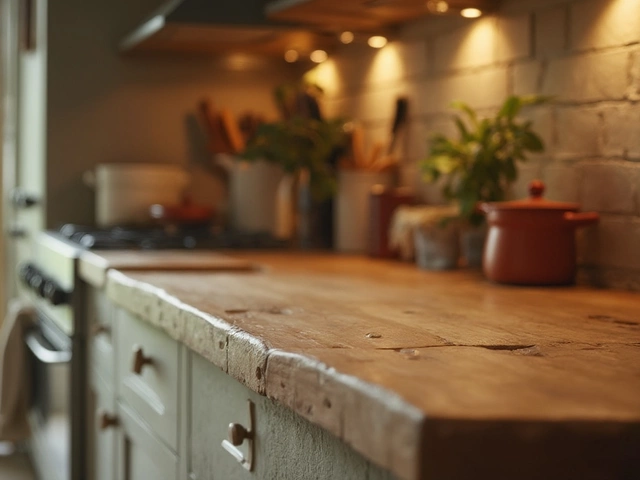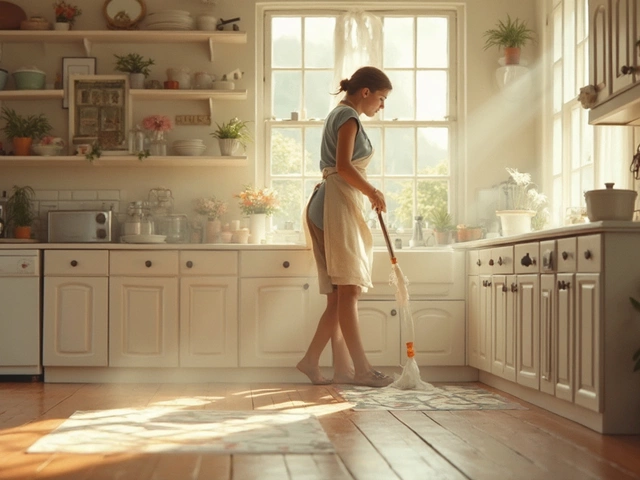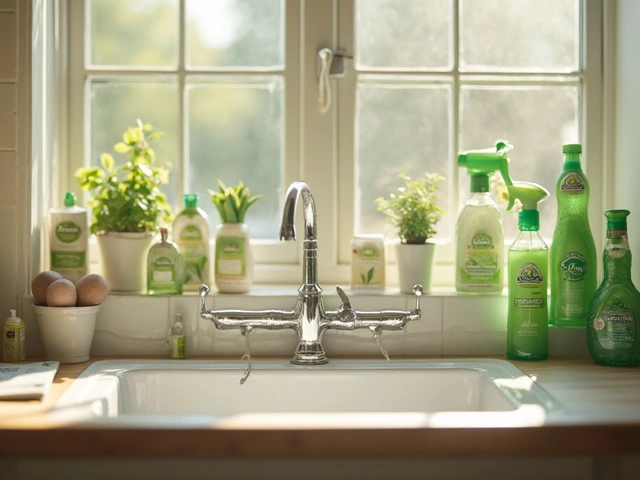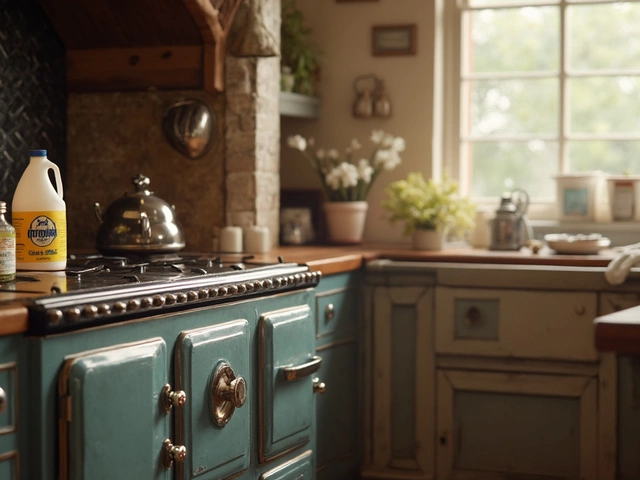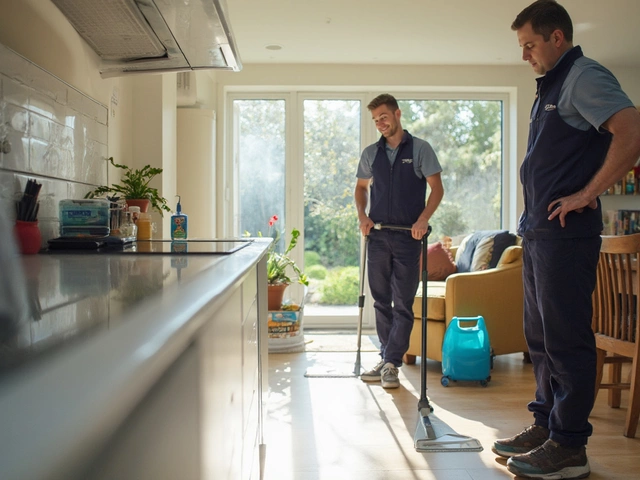Ask anyone who's survived home renovations—construction dust is one of the most stubborn things to deal with. You clean a surface, turn your back, and there it is again. So, how long does this stuff hang around in the air before it finally settles for good?
The quickest answer: some dust can start settling within 20 minutes, while the finest particles may float around for days. Imagine this—drywall dust is nearly weightless and can stay airborne with the tiniest gust. It gets everywhere, from behind sockets to places you haven't even thought about cleaning.
Most people think a single deep clean right after construction is enough, but dust is sneaky. You might notice new layers the next morning just from the air settling—or even from heating or air conditioning kicking on.
If you want to protect your lungs and your surfaces, timing your cleanup is everything. That's why knowing how dust behaves helps you plan better. Here's what you really need to know to win the fight against post-construction dust.
- What Really Happens with Construction Dust?
- How Long Does Dust Stay in the Air?
- Why Dust Keeps Coming Back
- Smart Timing for After Builders Cleaning
- Tools and Tricks to Speed Up Dust Settling
- How to Keep Dust Away for Good
What Really Happens with Construction Dust?
When builders leave, they usually take the big mess but not the construction dust. This stuff is made up of bits from drywall, plaster, cement, sawdust, and even tiny fibers from insulation. It’s so fine you usually can’t spot it until it lands somewhere or starts triggering allergies.
Here's the thing: not all dust is the same. Bigger particles, like bits of cement or heavier sawdust, usually drop to the ground within minutes. The really fine dust—think drywall or plaster—hangs out in the air for much longer, sometimes hours or days, especially if there’s movement or airflow in the room. That’s why you keep wiping but your surfaces still look filthy the next day.
During construction, especially if there’s sanding or drilling, clouds of dust get blown into the air. Ventilation, open windows, and even people walking around keep these particles floating. The trouble is, these tiny pieces aren’t just annoying—they can clog your air filters, settle inside electronics, or stick to fabrics and bedding.
- Dust settling time gets longer as particle size decreases. Anything under 10 microns can hang in the air for a long time.
- Only about 50-60% of construction dust actually settles on surfaces within the first hour after cleaning or activity stops.
- The rest often recirculates, especially if your HVAC system is running.
A UK study found that post-renovation dust can take 48 to 72 hours to really calm down. That might explain why, even after two or three rounds with the vacuum, you’re still finding chalky buildup in odd spots.
| Particle Type | Average Settling Time | Common Sources |
|---|---|---|
| Heavy debris (sand, wood chips) | 5–30 minutes | Demolition, cutting lumber |
| Medium dust (sawdust, cement) | 30–60 minutes | Flooring, masonry |
| Fine particles (drywall, insulation) | Several hours to days | Sanding, plasterwork |
This is why after builders cleaning can feel never-ending. Understanding what’s actually happening with construction dust helps you make smarter choices about when (and how often) to clean, and what gear you’ll need to finally get your place truly dust-free.
How Long Does Dust Stay in the Air?
This is the part nobody likes hearing: construction dust doesn’t just fall to the ground after an hour or two. Most of it is made up of really fine bits—think drywall, plaster, or cement—that can hang around in your air way longer than you expect. Some larger dust settles quickly, usually within 20 to 30 minutes. But the finer stuff? It can float for several hours to even a couple of days, especially if there’s any air movement in the room.
Here’s why: tiny dust particles are light and can be stirred up by something as simple as opening a door, walking through the area, or turning your air conditioning on. One recent study on indoor air quality found some dust settling time clocks in at less than an hour for heavier stuff—while the ultra-tiny particles can stay suspended for 5 to 12 hours or longer, depending on airflow and humidity.
To make it super clear, take a look at how different types of dust compare:
| Type of Dust | Time to Settle |
|---|---|
| Large and visible (wood chips, gravel) | Seconds to minutes |
| Medium (plaster, sawdust) | 20-60 minutes |
| Fine (drywall, cement, silica) | Several hours to days |
This is why your first round of after builders cleaning always seems to miss some. Even after a top-to-bottom wipe, more dust will land overnight, thanks to those super-light, persistent particles.
If you want the air clear as fast as possible, turn off fans, keep windows closed for a while, stop all extra movement, and give the dust an honest chance to settle. Then, plan on a second round of cleaning at least 12–24 hours after the first one. That’s when you’ll finally get most of it—because now, it’s actually landed on surfaces you can reach.
Why Dust Keeps Coming Back
It feels like a never-ending cycle—you wipe, vacuum, and mop, but construction dust still finds its way back onto every surface. So what's actually going on here?
First, let's talk about how dust moves. The finest construction particles, like those from drywall or plaster, are super light and float in the air for way longer than you'd expect. Even a quick walk across the room or the heating turning on can stir up settled dust and send it drifting back through the air. That's why it looks like dust is magically returning when, in reality, it's just never fully settled in the first place.
On top of that, regular household activities keep dust in motion. Every time you open a door or window, run a fan, or set the vacuum cleaner rolling, you disturb those sneaky particles and send them swirling again. Air conditioning or heating systems are another culprit—they pick up construction dust and blow it through the house, especially if the filters haven't been changed after building work.
Here's a breakdown of reasons dust keeps coming back after a build:
- Air Currents – HVAC, open windows, and just moving around the house keep dust in the air.
- Poor Filtering – Old or dirty filters in your air system just let dust circulate.
- Static Electricity – Some building materials create static, which helps dust cling to surfaces, then release when humidity changes.
- Hidden Piles – Unseen places (like inside vents, behind radiators, or under furniture) store a ton of dust, ready to re-enter the air at any moment.
To give you an idea of the numbers, the EPA found that after renovations, indoor air can contain dust loads up to five times higher than normal for a couple of weeks. And surface dust can return within hours if you don't break the cycle.
So, until you've gotten rid of the dust at its source, improved your air filtering, and stopped stirring it up, you'll keep seeing that layer reappear. It isn't magic, it's just how construction dust and air work together.

Smart Timing for After Builders Cleaning
The urge to clean right after the builders leave is real, but with construction dust, patience pays off. If you jump in too fast, you’ll be cleaning the same spots again the next day—no joke. Most pros agree: let dust settle for at least 24 hours before you start deep cleaning. This gap gives the tiniest dust particles enough time to drop from the air onto surfaces instead of just swirling around and sticking to your damp cloth.
Here’s another trick—avoid any cleaning when crews are still around or when there’s foot traffic. Opening windows helps some dust escape, but it can also invite more particles in depending on the weather. Use fans if possible to push dust toward open windows, but keep them running for a few hours after the work wraps up. It speeds up dust settling, especially for fine dust that’s tough to see.
Timing isn’t just about waiting. It’s about how you structure your cleaning sessions, especially for after builders cleaning. Here’s a solid order to get the most out of your effort:
- Check all vents and windows are closed before starting, so you’re not pulling in more dust.
- Start with dry dusting and vacuuming using a HEPA filter—these actually trap small particles instead of blowing them back out.
- Wait a few hours, then come back for a second round. You’ll be surprised how much more settles within three to six hours.
- Only after the air looks clear (no more visible haze in sunlight) should you move on to damp cleaning and mopping.
HEPA vacuum makers claim they can remove up to 99.97% of particles as small as 0.3 microns. That matters because a lot of post-construction cleanup deals with dust 10 times smaller than a grain of sand.
Bottom line: Plan on at least two patient cleaning sessions spaced a few hours apart, and don’t try to shortcut the process. That’s the key to finally saying goodbye to that stubborn construction dust cloud.
Tools and Tricks to Speed Up Dust Settling
Trying to clear out construction dust fast? You don’t have to just wait it out while dust floats around for days. Here’s what actually works to help it settle so you can get on with your after builders cleaning—and keep that dust from coming back.
- Ventilate Smartly: Open windows and doors to create a steady airflow, but avoid whipping up a full-blown windstorm that just keeps dust swirling. A fan placed near a window blowing out can pull dust-laden air outside instead of spreading it through your home.
- Use Air Purifiers with HEPA Filters: These bad boys trap the finer stuff most vacuums miss. Studies show HEPA filters can catch up to 99.97% of particles as small as 0.3 microns—basically, the kind of fine dust that annoys your lungs and ruins your cleaning.
- Spritz, Don’t Pour: Lightly mist dusty areas with water in a spray bottle. This weighs down tiny particles, making them settle faster instead of floating around when you wipe. Don’t overdo it or you’ll make a paste that’s even harder to clean up.
- Let Gravity Work (But Plan for It): Don’t rush to clean immediately after construction finishes. Give dust at least a few hours to a full day to settle, especially if workers were sanding or drywalling. Plan cleaning for the next day when most airborne dust has landed.
- Vacuum with the Right Machine: Regular vacuums can just spit dust back out. Use a vacuum with a HEPA filter. If you hire professionals, check what kind of vacuum they bring. No HEPA? Find someone else.
- Tack Cloths & Microfiber: Old-school tack cloths and microfiber towels work way better than dry dusting. They grab and hold dust instead of just moving it around. Bonus tip: Don’t forget light fixtures, vents, door frames, and window sills—these spots collect sneaky amounts of dust.
| Tool | Best Use | Effectiveness (1-5) |
|---|---|---|
| HEPA Air Purifier | Capturing airborne dust | 5 |
| HEPA Vacuum | Removing floor and surface dust | 5 |
| Microfiber Cloths | Wiping fine dust from surfaces | 5 |
| Spray Bottle | Settling dust from the air | 4 |
| Tack Cloth | Grabbing dust on woodwork | 4 |
| Standard Fan | Ventilating room | 3 |
The right tools make a big difference—don’t cheap out on filters or skip that final wipe-down. The better your post-construction cleanup, the less you’ll be breathing in or wiping up later on.
How to Keep Dust Away for Good
After a serious round of construction dust cleanup, almost everyone wonders if you can actually keep the stuff away for good. The short answer: you can make a huge difference with some ongoing habits and smart tricks, but it’s about maintenance, not magic.
If you don’t want dust sneaking back, start with your air. After any building work, change out your HVAC or air purifier filters. Builders dust is made up of fine particles that standard filters can miss. Use HEPA filters for the best results—they catch the stubborn, tiny stuff and help keep dust settling time at a minimum.
Lack of ventilation is another big reason dust lingers. Regularly open your windows when weather lets you, and let fresh air do some of the work. Even running extractor fans in kitchens or bathrooms helps keep those particles moving out instead of falling back onto every surface.
Don’t forget about soft furnishings—curtains, couches, rugs, even your bed! These act like dust magnets after renovations. Washing or vacuuming these places weekly shoots down a major source of post-construction cleanup headaches.
Bust dust on hard floors with a microfiber mop, not a regular broom that just flings it around. And skip dry dusting for now—use a damp cloth because water actually traps fine dust rather than spreading it.
- Stick to a regular cleaning schedule for floors, skirtings, and high shelves—these are hot spots.
- Keep shoes at the door. Loads of leftover dust in a house comes from tracking fine stuff in and out during and after building work.
- Seal up cracks around doors and windows so dust from outside doesn’t sneak back in.
- Arrange a pro-level after builders cleaning at least once when you’re done.
Here’s a quick look at how much more effective better filtration and habits can be:
| Action | Dust Reduced (%) |
|---|---|
| HEPA filter use | Up to 80% |
| Weekly microfiber mopping | About 50% |
| Leaving shoes at the door | Up to 35% |
It won’t be perfect, but if you keep up these habits, you’ll actually notice your air feels a lot cleaner—and you won’t be chasing dust bunnies week after week.
